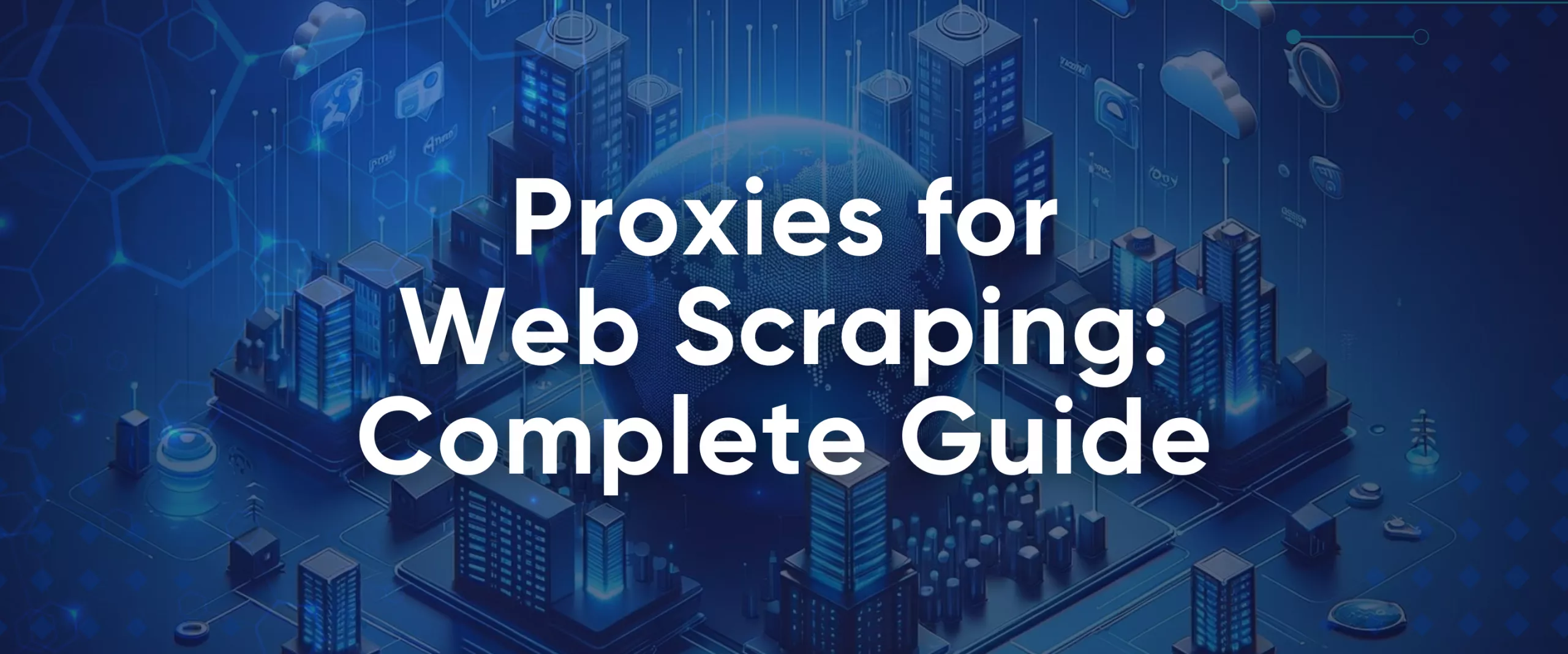I wish that we could collect freely available data online without any intermediary servers, but we don’t, and that’s why we need to use proxy servers. If you are going to spend your money on them, you better know what type is the best.
This article will deal with the issue of choosing proxies for your web scraping projects. The issue is a bit more complicated than it looks, but not something that cannot be taken care of with the right approach.
Why Do You Need Proxies When Web Scraping?
Let’s start with the basics in case you are uninitiated. Web scraping is all about using bots to collect online data. They are more efficient than humans because they can extract data straight from the code of the website and with thousands of requests per minute.
Web servers do not want so many automatic requests sent because it can overload the server and block the usage of ordinary servers. So, some anti-bot measures are quite reasonable, but it all gets worse when servers start to block even moderate amounts of requests.
That’s when proxies enter the field. As you might know, they are intermediary devices that can send network requests on your behalf. So, your web scraper can use the connection of a proxy server instead of the one given by your Internet Service Provider (ISP).
As such, your original identity is unknown to the target server, and your IP will not get banned. There are many different proxy types that can be used for web scraping. Choosing the best one isn’t so straightforward, but there are two main options.
Two Proxy Types
If money weren’t an issue and you could have any proxy infrastructure imaginable, every data collection project would use a unique set of IPs set up specifically for that purpose. It’s unlikely that you are from a big corporation and can use such conditions, so you must work with what you can find on offer from common proxy providers.
Shared Rotating Datacenter Proxies
A datacenter proxy is the most common choice for all projects that require a proxy server to handle lots of data. Datacenter proxies are created using virtual machines on powerful commercial data servers. One such server can house hundreds of virtual machines and not lose performance.
That’s why most providers sell such datacenter IPs in bulk and do not count the bandwidth you use. Instead, you pay for a certain amount of IP addresses and can use any amount of data you wish. This doesn’t apply to private static datacenter proxies, so if you want to save the most money, you just ensure your data center proxies are also shared and rotating.
Sharing proxy access means that multiple users can use the same IP address concurrently. This would be an issue for your home connection, but datacenter proxies are less likely to experience performance bumps due to access from many users. So, with minimal loss to efficiency, you can lower the costs by sharing the access.
Shared datacenter proxies can still be sabotaged by other users when they use scraping bots or other software irresponsibly. That’s why most of them are rotated between users. It simply means that the IP addresses are changed every now and then (usually every thirty minutes).
Rotation makes it significantly more difficult for websites to determine that you are using a web scraper and ban the IP address. If they detect you, it’s already too late, and you are already using another IP address. That’s why shared rotating datacenter proxies are a cheap and reliable option.
Private Static Residential Proxies
If the website you are targeting has a strong defense against web scrapers, a datacenter proxy might not be enough. Even with rotation, resourceful web servers, such as those of Amazon or Facebook, can restrict the IP address in minutes.
There are workarounds, such as using CAPTCHA solvers, but usually, it’s more cost-effective to simply buy residential proxies. These proxies are based in ordinary houses and run on physical computers. Every such IP address is verified by a common ISP, so its credibility can be checked by websites.
It’s risky for web servers to block or restrict residential IP addresses as it might affect other users. That’s why you have much better chances to fly under the radar while using a web scraper with a residential proxy server. However, unlike with a datacenter proxy, you cannot cut any costs here.
Residential proxies work best for scraping when they are private, meaning that you are the only one accessing the IP. Sharing the access lowers residential proxies significantly and might make the connection unusable for web scraping purposes.
The best residential proxy for web scraping must also be static, as rotating already legitimate IPs will not add any more anonymity. In some cases, such as scraping data under a log-in, it might attract more attention than hide you.
Is There a Middle Ground Option?
These two options are opposites of one another. On the one hand, we have expensive and one-of-a-kind residential proxies, and on the other, cheap yet powerful data center ones. It should be mentioned that there are some middle-ground options.
Mobile proxies, for example, are getting more and more powerful with each new cellular data iteration. 5G proxies can already be used as an alternative to residential ones. There are also variations in datacenter and residential proxies.
Private datacenter proxies or shared residential ones are possible options. However, it’s difficult to guess their effectiveness without exactly knowing the tools you will be using and the websites you will be targeting.
Final Tip
Every proxy type can be used for web scraping to some extent, but the two proxy types presented here encompass the whole spectrum of options to choose from. If you aren’t sure what will bring you the best success rate, try one of them and then work your way from there. Good luck.

